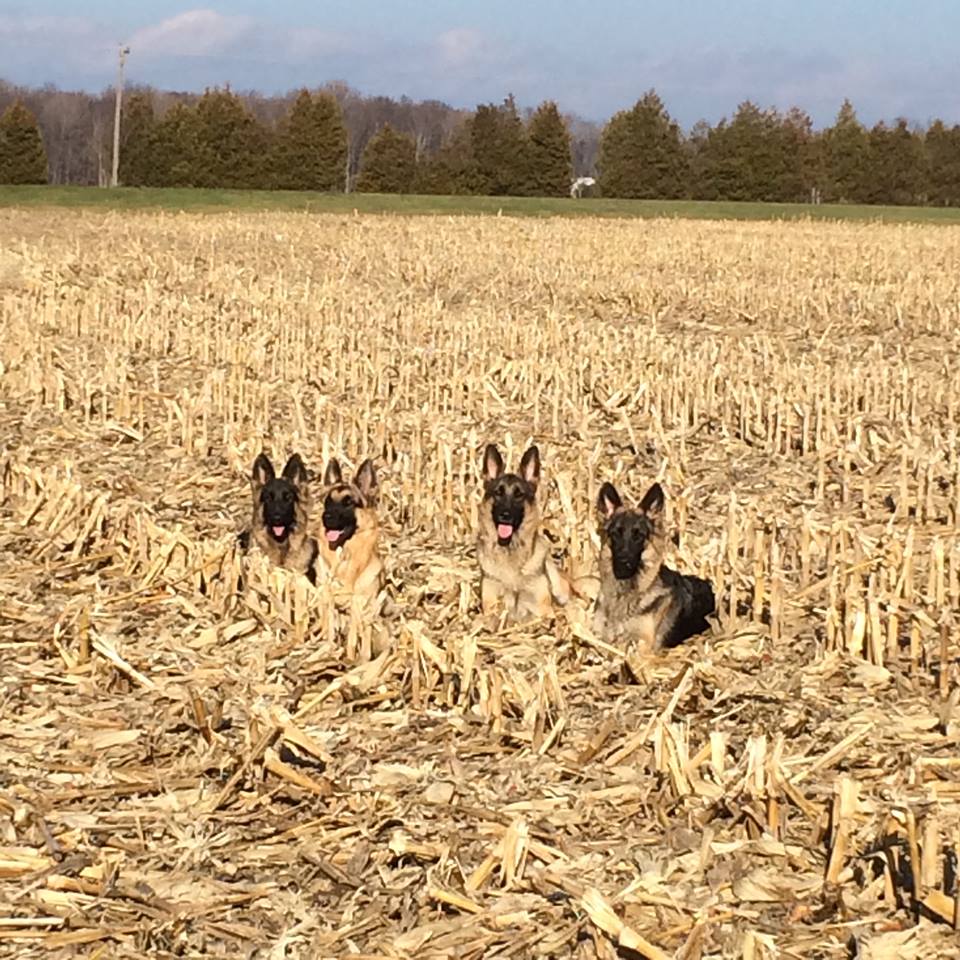Dog Training Problems – Ignore Bad Behavior

Rose has been rather tense lately. There has been a lot going on in our home. I’ve noticed that she has started to react strongly when someone stares at her, something I do not allow my dogs to do. I teach my dogs that I am the only one that makes ‘action’ decisions. This is the first step in any behavior modification or dog training program.
As Roxanne says (www.rawforpets.com) a long time German Shepherd breeder and trainer, ‘If you are calm, the dog must be calm.’
I never thought much about how I train my own dogs until this week. With all the training, education, and courses I’ve taken. With some great mentors and advisors, like Trish King, you’d think I would have run to the training center and immediately engaged in some control and behavior modification exercises.
This wasn’t my first course of action. If you know me, and you’ve taken my courses you probably already know what I did. I packed Ro, a few toys, and some treats (duck feet) into the car and we headed to the beach. No, we didn’t go where all the people where. We went way to the back and we just hung out for an hour and relaxed. We played a bit of catch, and snacked. Then we went home.
Behavior Modification – Ignore Bad Behavior
One of the most misunderstood training techniques is the ‘ignore the bad behavior’. Too many people read a book or two and head out only understanding ½ of the equation. First of all, the exercises don’t work because they are based on operant conditioning – which only works on voluntary behaviors.
With any reactive behavior we need to use classical conditioning. This means that we need to build associations between the stimulus, and something good. We need to change the association between the dog’s emotions (reaction) and the stimulus. In this case, I needed to remind Ro of a few things:
- I am calm around people – you be calm.
- People are good.
- Don’t react.
So I didn’t force Ro into a crowd of people (flooding) and try to stuff treats into her mouth. I didn’t force her to do anything that might increase her anxiety, stress, or chemical reaction to the situation.
Instead we went to an area where she could start to develop a calm, relaxed attitude towards the stimulus. I ‘stopped’ the bad behavior by altering the environment and then I rewarded calm. When she looked at the people the treats and play stopped. When she focused on me, the game and treats continued.
I rewarded calm. After all – this is the behavior that we want.
Why Behavior Modification Fails
This is the exact opposite of what most people are taught. They ignore the dog when it is walking quietly. They don’t talk to their dog, offer treats, or engage in play. They may walk for 30 minutes in total silence. The owner is ‘ignoring’ the behavior they do want.
Then the trigger/stimulus comes into view and ‘everything happens.’ The dog is reacting. The dog is upset, or anxious, or fearful. Now the owner becomes engaged. Now the owner starts giving treats. The owner is ‘engaging’ with the behavior that they don’t want.
